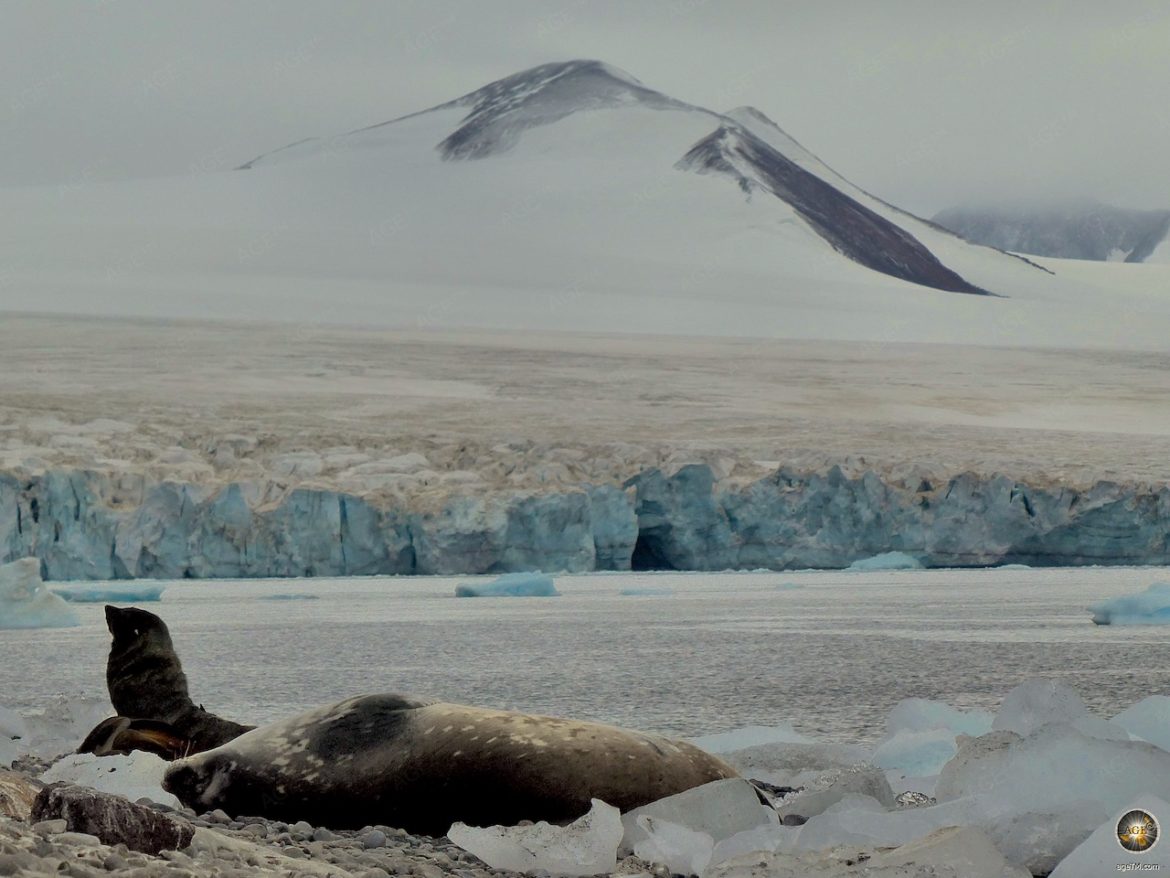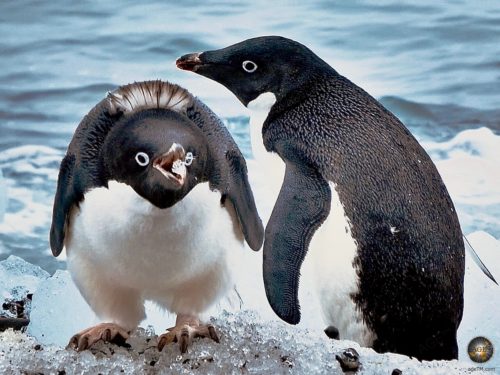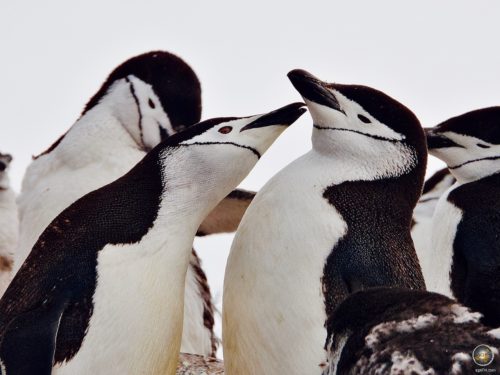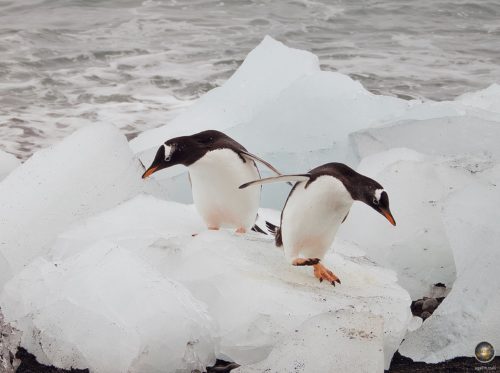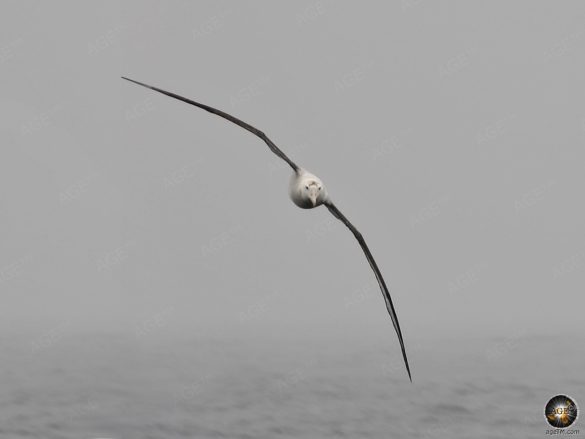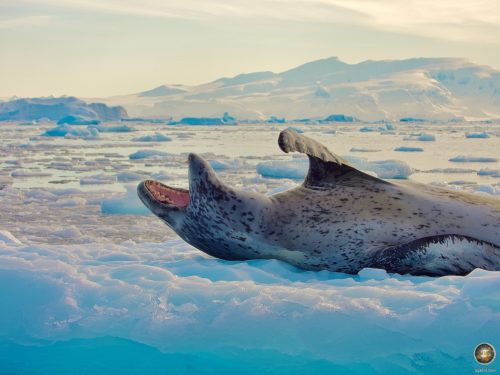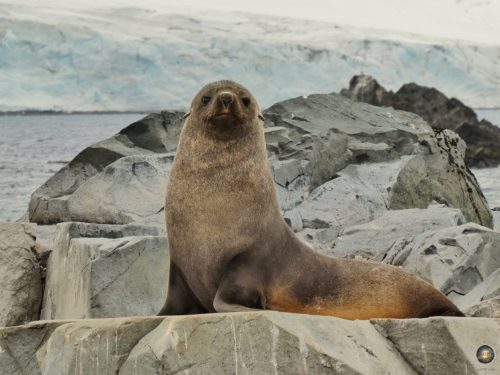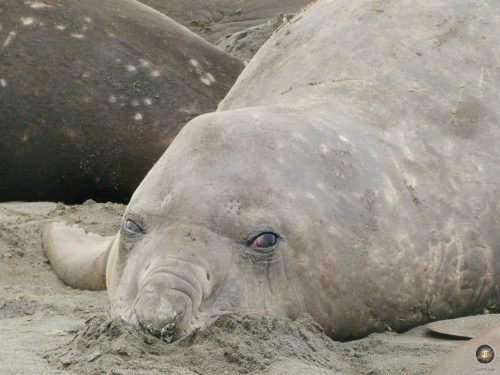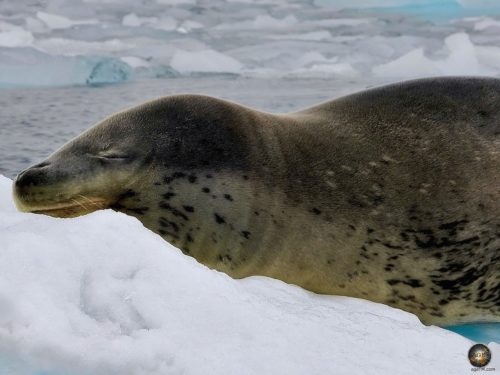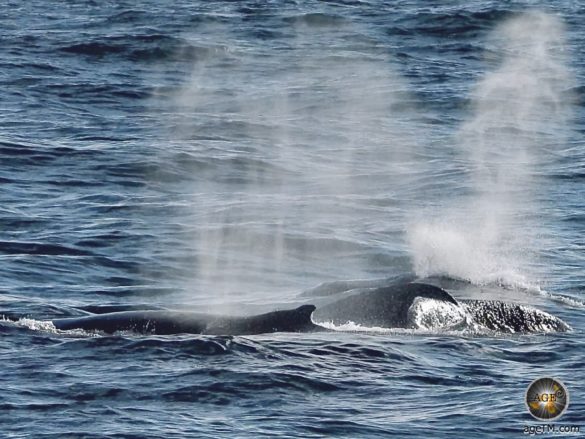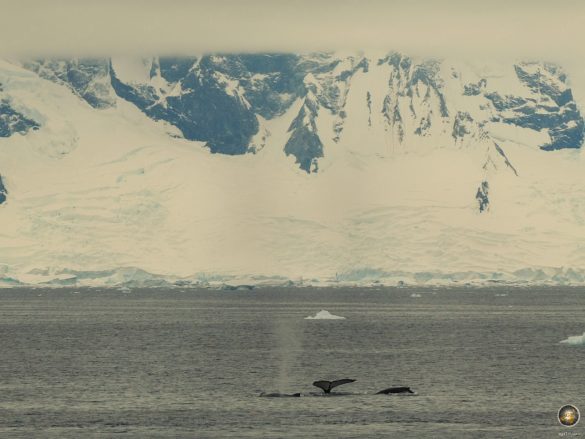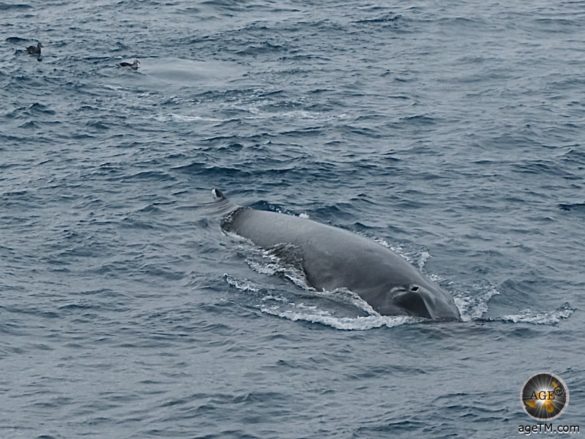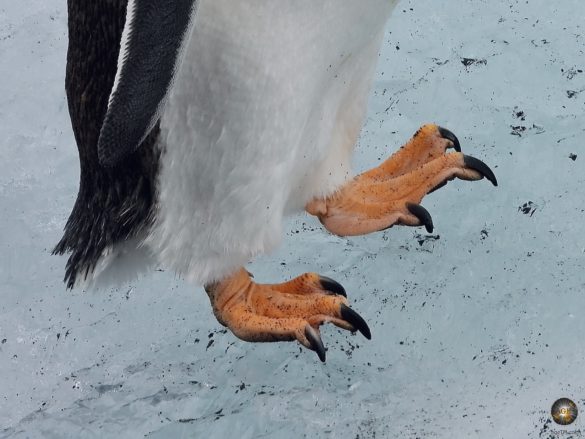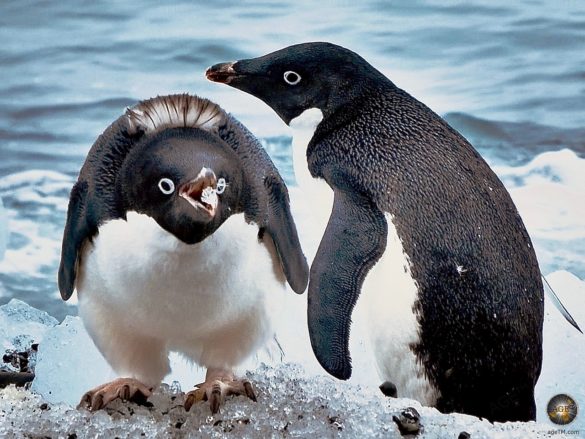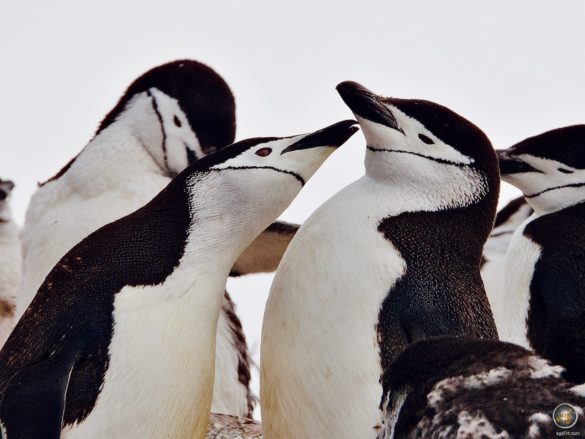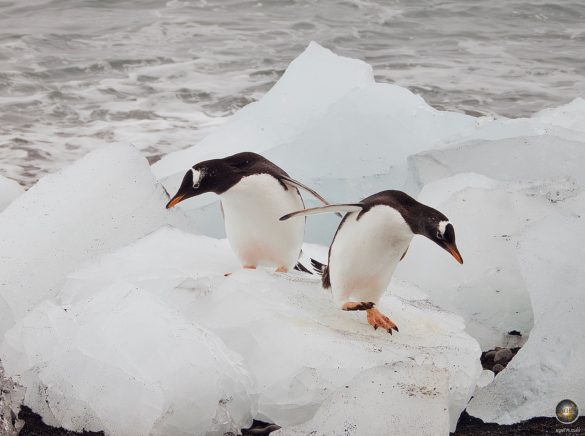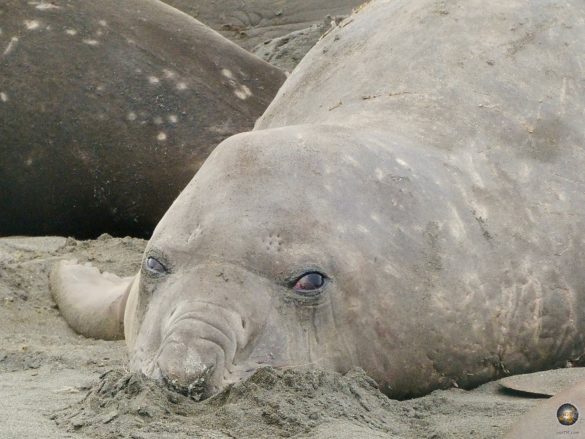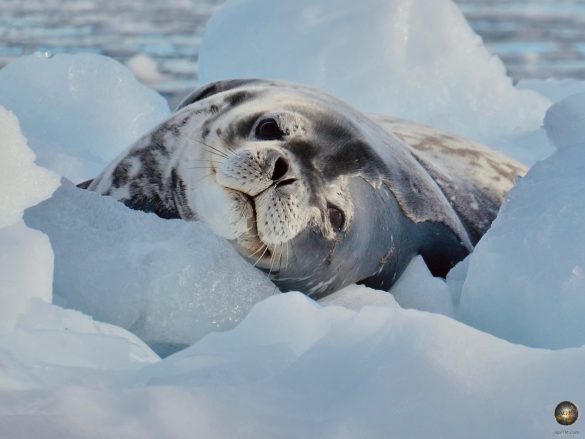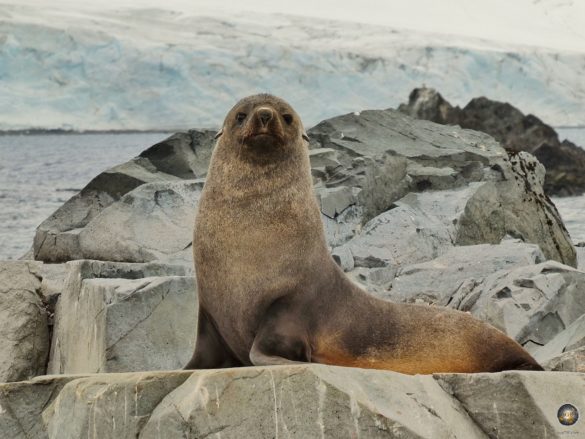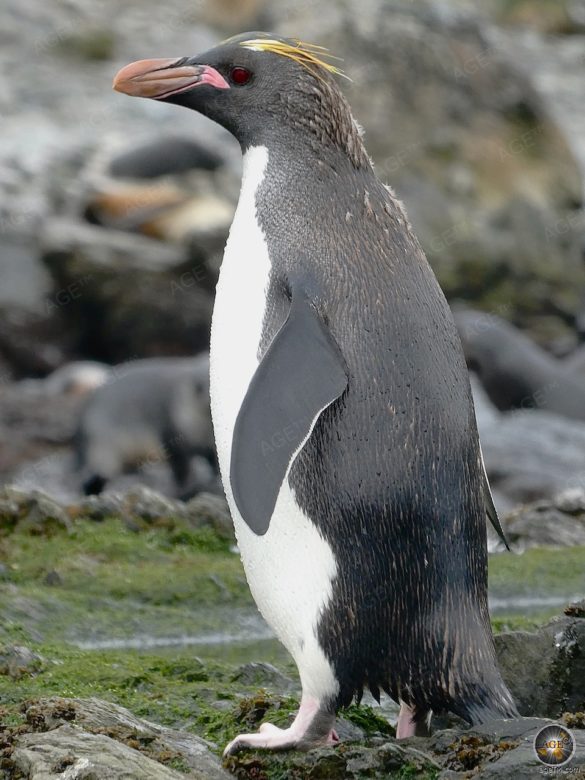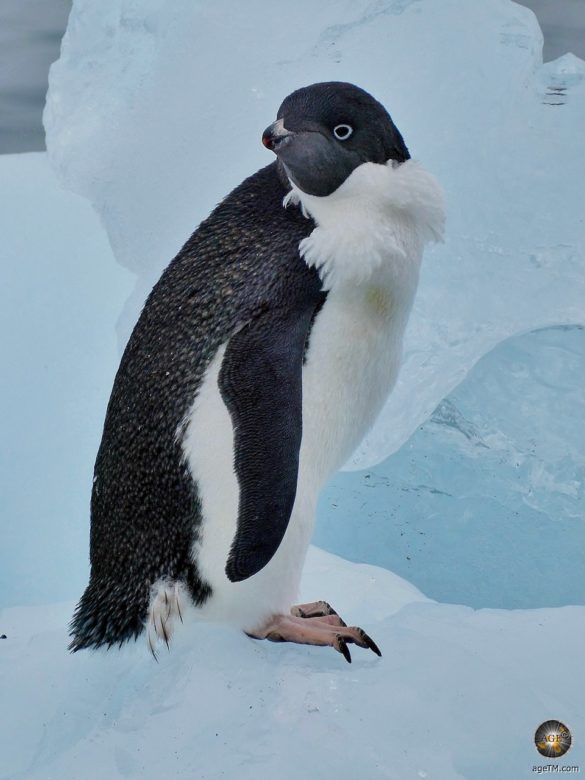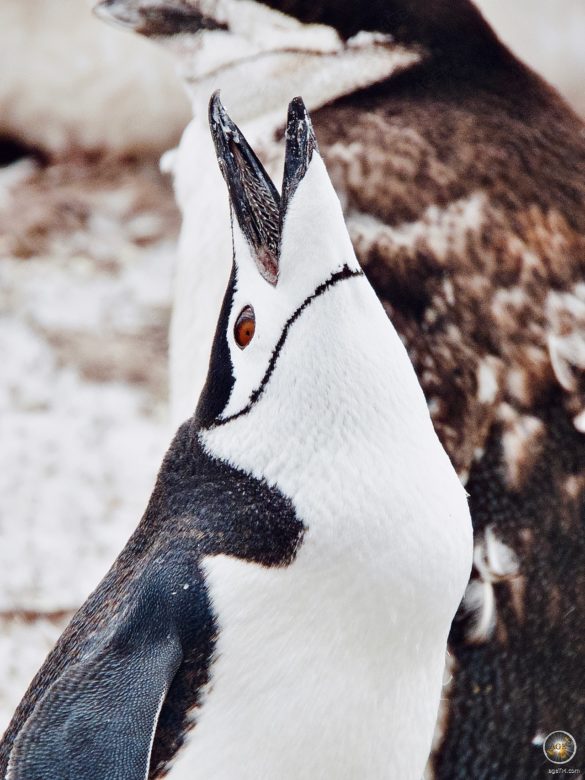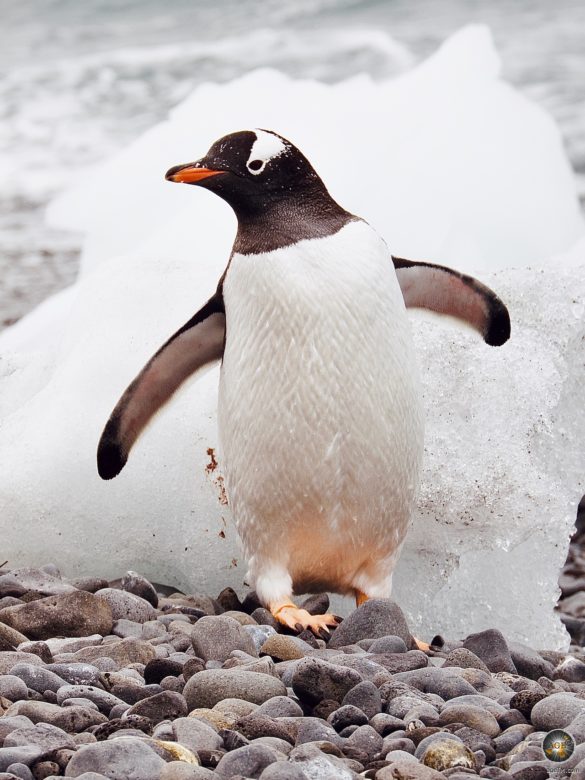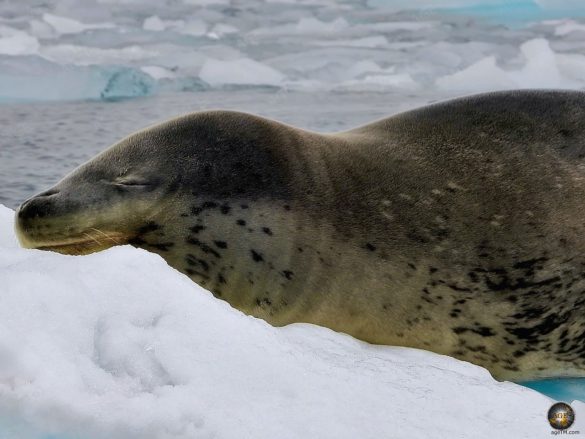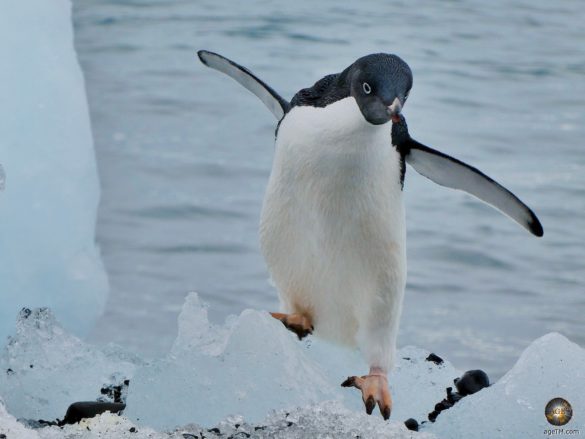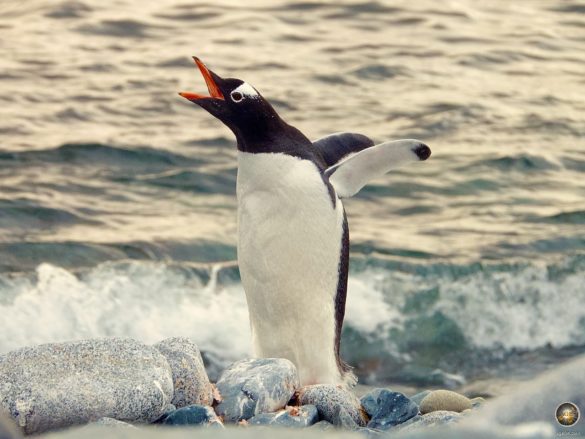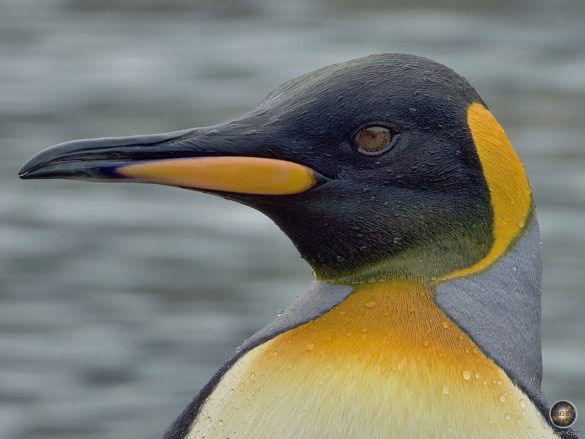What animals live in Antarctica's unique ecosystem?
Snowy, cold and inhospitable. Only the toughest survive in this environment where food seems scarce. But is Antarctica really as hostile to life as it first appears? The answer is yes and no at the same time. There is almost no food on land and few ice-free areas. The landmass of the Antarctic continent is lonely and rarely visited by living beings.
The coasts, on the other hand, belong to the animals of Antarctica and are populated by many animal species: seabirds nest, various species of penguins raise their young and seals frolic on ice floes. The sea provides food in abundance. Whales, seals, birds, fish and squid eat around 250 tons of Antarctic krill every year. An unimaginable amount of food. So it's no wonder that Antarctica is populated mainly by marine animals and seabirds. Some go on land temporarily, but all are tied to the water. The Antarctic waters themselves are incredibly rich in species: more than 8000 animal species are known.
Birds, mammals and other inhabitants of Antarctica
Birds of Antarctica
marine mammals of Antarctica
Underwater World of Antarctica
Land Animals of Antarctica
Antarctic wildlife
- Which animals do not live in Antarctica?
- Where do most animals live in Antarctica?
- Adaptations to life in Antarctica
- Even in Antarctica there are parasites
Animal Species of Antarctica
You can find more information about animals and wildlife observation around Antarctica in the articles Penguins of Antarctica, Antarctic seals, Wildlife of South Georgia and in the Antarctica & South Georgia Travel Guide.
animals • Antarctica • Antarctic trip • Animals of Antarctica
The heraldic animal: penguins of Antarctica
When you think of Antarctic wildlife, the first thing that comes to mind is penguins. They are the symbol of the white wonder world, the typical animals of Antarctica. The emperor penguin is probably the best-known animal species on the Antarctic continent and the only species that breeds directly on ice. However, its breeding colonies are extremely difficult to access. Adelie penguins are also common around Antarctica, but they breed close to the coast and are therefore easier to observe. They're not as big as their familiar relatives, but they're just as cuddly. They prefer ice-free coastal strips with lots of pack ice. Emperor penguins and Adelie penguins are real ice lovers and are the only ones that breed on the main part of the Antarctic continent.
Chinstrap penguins and gentoo penguins breed on the Antarctic Peninsula. Furthermore, a colony of golden-crested penguins is reported, which also nests on the peninsula. So there are 5 species of penguins on the Antarctic continent. The king penguin is not included, as it only comes to hunt on the coasts of Antarctica in winter. Its breeding area is the sub-Antarctic, for example the sub-Antarctic island South Georgia. Rockhopper penguins also live in sub-Antarctica, but not on the Antarctic continent.
- Emperor penguins (Aptenodytes forsteri) with chicks in Antarctica.
- Adelie penguins (Pygoscelis adeliae) in Antarctica with lumps of ice
- Chinstrap penguins doing the familiar beaking.
- Gentoo penguins in the ice of Antarctic Sound
- King penguin portrait (Aptenodytes patagonicus) in subantarctica.
animals • Antarctica • Antarctic trip • Animals of Antarctica
Other seabirds of Antarctica
According to the Federal Environment Agency, around 25 other bird species live on the Antarctic Peninsula, in addition to the much-cited penguins. Skuas, giant petrels and white-faced waxbills are common sights on an Antarctic voyage. They like to steal penguin eggs and can also be dangerous to the chicks. The largest and most famous bird is the albatross. Several species of these imposing birds occur around Antarctica. And even a species of cormorant has found its home in the Cold South.
Three species of birds have even been spotted at the South Pole itself: the snow petrel, the Antarctic petrel and a species of skua. So they can safely be called animals of Antarctica. There are no penguins there because the South Pole is too far away from the life-giving sea. The emperor penguin and the snow petrel are the only vertebrates that actually stay inland Antarctica for long periods of time. The emperor penguin breeds on solid sea ice or inland ice, up to 200 kilometers from the sea. The snow petrel lays its eggs on ice-free mountain peaks and ventures up to 100 kilometers inland to do so. The arctic tern holds another record: it flies around 30.000 kilometers per year, making it the migratory bird with the longest flight distance in the world. It breeds in Greenland and then flies to Antarctica and back again.
animals • Antarctica • Antarctic trip • Animals of Antarctica
Antarctic seal species
The dog seal family is represented by several species in Antarctica: Weddell seals, leopard seals, crabeater seals and the rare Ross seal are typical animals of Antarctica. They hunt on the Antarctic coast and give birth to their young on ice floes. The impressive southern elephant seals are also dog seals. They are the largest seals in the world. Although they are typical inhabitants of the subarctic, they are also found in Antarctic waters.
The Antarctic fur seal is a species of eared seal. It is primarily at home on the sub-Antarctic islands. But sometimes he is also a guest on the coasts of the white continent. The Antarctic fur seal is also known as the fur seal.
- Resting Weddell seal in the Antarctic ice.
- Leopard seal (Hydrurga leptonyx) with open mouth.
- Fur Seal perched on a rock with the glacier in the background.
- A young male elephant seal in subantarctica.
- Leopard seal portrait (Hydrurga leptonyx) in Antarctica.
animals • Antarctica • Antarctic trip • Animals of Antarctica
Whales in Antarctica
Aside from seals, whales are the only mammals found in Antarctica. They feed in the Antarctic waters, taking advantage of the region's abundant feeding table. The Federal Environment Agency states that 14 whale species occur regularly in the Southern Ocean. These include both baleen whales (e.g. humpback, fin, blue and minke whales) and toothed whales (e.g. orcas, sperm whales and various species of dolphins). The best time for whale watching in Antarctica is February and March.
animals • Antarctica • Antarctic trip • Animals of Antarctica
Underwater biodiversity of Antarctica
And otherwise? Antarctica is more biodiverse than you think. Penguins, seabirds, seals and whales are just the tip of the iceberg. Most of Antarctica's biodiversity is underwater. Around 200 species of fish, a huge biomass of crustaceans, 70 cephalopods and other sea creatures such as echinoderms, cnidarians and sponges live there.
By far the best-known Antarctic cephalopod is the giant squid. It is the largest mollusk in the world. However, by far the most important animal species in the Antarctic underwater world is the Antarctic krill. These shrimp-like little crabs form huge swarms and are the basic food source for many Antarctic animals. There are also starfish, sea urchins and sea cucumbers in the cold climes. The variety of cnidarians ranges from giant jellyfish with meter-long tentacles to tiny colony-forming life forms that form coral. And even the oldest creature in the world lives in this apparently hostile environment: the giant sponge Anoxycalyx joubini is said to reach an age of up to 10.000 years. There is still a lot to discover. Marine biologists are still documenting numerous unexplored creatures large and small in the icy underwater world.
animals • Antarctica • Antarctic trip • Animals of Antarctica
Land Animals of Antarctica
Penguins and seals are aquatic animals by definition. And the seabirds that are able to fly stay mainly above the sea. So, are there animals in Antarctica that only live on land? Yes, a very special insect. The endemic wingless mosquito Belgica antarctica has adapted to the extreme conditions of the frigid world of Antarctica. Its tiny genome is causing a sensation in scientific circles, but this insect has a lot to offer in other ways too. Sub-zero temperatures, drought and salt water - no problem at all. The mosquito produces a powerful antifreeze and can survive dehydration of up to 70 percent of its body fluids. It lives as a larva for 2 years in and on the ice. It feeds on algae, bacteria and penguin droppings. The adult insect has 10 days to mate and lay eggs before dying.
This tiny flightless mosquito actually holds the record as the largest permanent land resident of the Antarctic continent. Otherwise, there are other microorganisms in the Antarctic soil, such as nematodes, mites and springtails. A rich microcosm can be found particularly where the soil has been fertilized by bird droppings.
animals • Antarctica • Antarctic trip • Animals of Antarctica
More exciting information about the animal world in Antarctica
 What animals are there not in Antarctica?
What animals are there not in Antarctica?
There are no land mammals, no reptiles and no amphibians in Antarctica. There are no predators on land, so Antarctica's wildlife is unusually relaxed about visitors. Of course there are no polar bears in Antarctica either, these formidable hunters are only found in the Arctic. So penguins and polar bears can never meet in nature.
 Where do most animals live in Antarctica?
Where do most animals live in Antarctica?
Most animal species live in the Southern Ocean, i.e. in the Antarctic waters around Antarctica. But where on the Antarctic continent are the most animals? On the coasts. And which ones? The Vestfold Mountains, for example, are an ice-free area in East Antarctica. Southern elephant seals like to visit their coastal region and Adelie penguins use the ice-free zone for breeding. the Antarctic Peninsula on the edge of West Antarctica, however, is home to by far the most animal species on the Antarctic continent.
There are also numerous Antarctic and sub-Antarctic islands surrounding the Antarctic landmass. These are also seasonally inhabited by animals. Some species are even more common there than on the Antarctic continent itself. Examples of interesting sub-Antarctic islands are: The South Shetland Islands in the Southern Ocean Animal paradise South Georgia and the South Sandwich Islands in the Atlantic Ocean, that Kerguelen Archipelago in the Indian Ocean and the Auckland Islands in the Pacific Ocean.
 Adaptations to life in Antarctica
Adaptations to life in Antarctica
Penguins of the Antarctic have adapted to life in the cold through numerous small things. For example, they have specially insulating types of feathers, thick skin, a generous layer of fat, and a habit of protecting each other in large groups from the wind when it's cold to reduce their heat loss. The feet of the penguins are particularly exciting, because special adaptations in the blood vessel system enable the penguins to maintain their body temperature despite cold feet. Learn in Adaptation of Penguins to Antarctica more about why penguins need cold feet and what tricks nature has come up with for this.
The Antarctic seals have also adapted perfectly to life in the icy water. The best example is the Weddell seal. She looks incredibly fat and has every reason to be, because the thick layer of fat is her life insurance. The so-called blubber has a strong insulating effect and enables the seal to dive long into the ice-cold water of the Southern Ocean. This is important because the animals live more under the ice than on the ice. Find out in the article Antarctic seals, how Weddell seals keep their breathing holes clear and what is so special about their milk.
 Even in Antarctica there are parasites
Even in Antarctica there are parasites
Even in Antarctica there are animals that live at the expense of their hosts. For example, parasitic roundworms. The roundworms that attack seals are of a different species than those that attack whales, for example. Penguins are also plagued by nematodes. Crustaceans, squid, and fish serve as intermediate or transport hosts.
Ectoparasites also occur. There are animal lice that specialize in seals. These pests are very exciting from a biological point of view. Some seal species can dive to depths of 600 meters and the lice have managed to adapt to survive these dives. A remarkable achievement.
Overview of the animals of Antarctica
5 animals that are typical of Antarctica
![]() The classic emperor penguin
The classic emperor penguin
![]() The cute Adelie penguin
The cute Adelie penguin
![]() The grinning leopard seal
The grinning leopard seal
![]() The ultra-fat weed seal
The ultra-fat weed seal
![]() The white snow petrel
The white snow petrel
Vertebrates in Antarctica
| | Seals: Wedge Seal, Leopard Seal, Crabeater Seal, Southern Elephant Seal, Antarctic Fur Seal Whales: eg humpback whale, fin whale, blue whale, minke whale, sperm whale, orca, several species of dolphins |
| penguins: Emperor penguin, Adelie penguin, chinstrap penguin, gentoo penguin, golden-crested penguin (King Penguin and Rockhopper Penguin in Subantarctica) Other seabirds: eg petrels, albatrosses, skuas, terns, white-faced waxbill, a species of cormorant | |
| Approx. 200 species: eg Antarctic fish, disc bellies, eelpout, giant Antarctic cod |
Invertebrates in Antarctica
| arthropod | Eg crustaceans: including the Antarctic krill Eg insects: including seal lice and the endemic wingless mosquito Belgica antarctica eg springtails |
| mollusks | Eg squid: including the giant squid eg mussels |
| echinoderms | eg sea urchins, starfish, sea cucumbers |
| cnidarians | eg jellyfish & corals |
| worms | eg threadworms |
| sponges | eg glass sponges including the giant sponge Anoxycalyx joubini |
Tourists can also discover Antarctica on an expedition ship, for example on the Sea Spirit.
Explore the lonely kingdom of the cold with the AGE™ Antarctic Travel Guide.
animals • Antarctica • Antarctic trip • Animals of Antarctica
Enjoy the AGE™ Image Gallery: Antarctic Biodiversity
(For a relaxed slide show in full format, simply click on one of the photos)
animals • Antarctica • Antarctic trip • Animals of Antarctica
Copyrights, notices and source information
Information on site by the expedition team from Poseidon Expeditions or on the Cruise ship Sea Spirit, as well as personal experiences on the expedition cruise from Ushuaia via the South Shetland Islands, the Antarctic Peninsula, South Georgia and Falklands to Buenos Aires in March 2022.
Alfred Wegener Institute Helmholtz Center for Polar and Marine Research (n.d.), Antarctic bird life. Retrieved on 24.05.2022/XNUMX/XNUMX, from URL: https://www.meereisportal.de/meereiswissen/meereisbiologie/1-meereisbewohner/16-vogelwelt-der-polarregionen/162-vogelwelt-der-antarktis/
dr dr Hilsberg, Sabine (29.03.2008/03.06.2022/XNUMX), Why don't penguins freeze with their feet on the ice? Retrieved on XNUMX/XNUMX/XNUMX, from URL: https://www.wissenschaft-im-dialog.de/projekte/wieso/artikel/beitrag/warum-frieren-pinguine-mit-ihren-fuessen-nicht-am-eis-fest/
dr Schmidt, Jürgen (28.08.2014/03.06.2022/XNUMX), Can head lice drown? Retrieved on XNUMX/XNUMX/XNUMX, from URL: https://www.wissenschaft-im-dialog.de/projekte/wieso/artikel/beitrag/koennen-kopflaeuse-ertrinken/
GEO (oD) These animals are the oldest animals of their kind. Giant sponge Anoxycalyx joubini. [online] Retrieved on 25.05.2022/XNUMX/XNUMX, from URL: https://www.geo.de/natur/tierwelt/riesenschwamm–anoxycalyx-joubini—10-000-jahre_30124070-30166412.html
Handwerk, Brian (07.02.2020/25.05.2022/XNUMX) Bipolar myths: There are no penguins at the South Pole. [online] Retrieved on XNUMX/XNUMX/XNUMX, from URL: https://www.nationalgeographic.de/tiere/2020/02/bipolare-mythen-am-suedpol-gibts-keine-pinguine
Heinrich-Heine-University Düsseldorf (March 05.03.2007th, 03.06.2022) Parasite hunting in the Southern Ocean. Marine census brings new insights. Retrieved on XNUMX/XNUMX/XNUMX, from URL: https://www.scinexx.de/news/biowissen/parasitenjagd-im-suedpolarmeer/
Podbregar, Nadja (12.08.2014/24.05.2022/XNUMX) Reduced to the essentials. [online] Retrieved on XNUMX/XNUMX/XNUMX, from URL: https://www.wissenschaft.de/erde-umwelt/aufs-wesentliche-reduziert/#:~:text=Die%20Zuckm%C3%BCcke%20Belgica%20antarctica%20ist,kargen%20Boden%20der%20antarktischen%20Halbinsel.
Federal Environment Agency (n.d.), Antarctica. [online] In particular: Animals in the eternal ice - the fauna of Antarctica. Retrieved on 20.05.2022/XNUMX/XNUMX, from URL: https://www.umweltbundesamt.de/themen/nachhaltigkeit-strategien-internationales/antarktis/die-antarktis/die-fauna-der-antarktis
Wiegand, Bettina (undated), Penguins - Masters of Adaptation. Retrieved on 03.06.2022/XNUMX/XNUMX, from URL: https://www.planet-wissen.de/natur/voegel/pinguine/meister-der-anpassung-100.html#:~:text=Pinguine%20haben%20au%C3%9Ferdem%20eine%20dicke,das%20Eis%20unter%20ihnen%20anschmelzen.
Wikipedia authors (05.05.2020/24.05.2022/XNUMX), snow petrel. Retrieved on XNUMX/XNUMX/XNUMX, from URL: https://de.wikipedia.org/wiki/Schneesturmvogel

